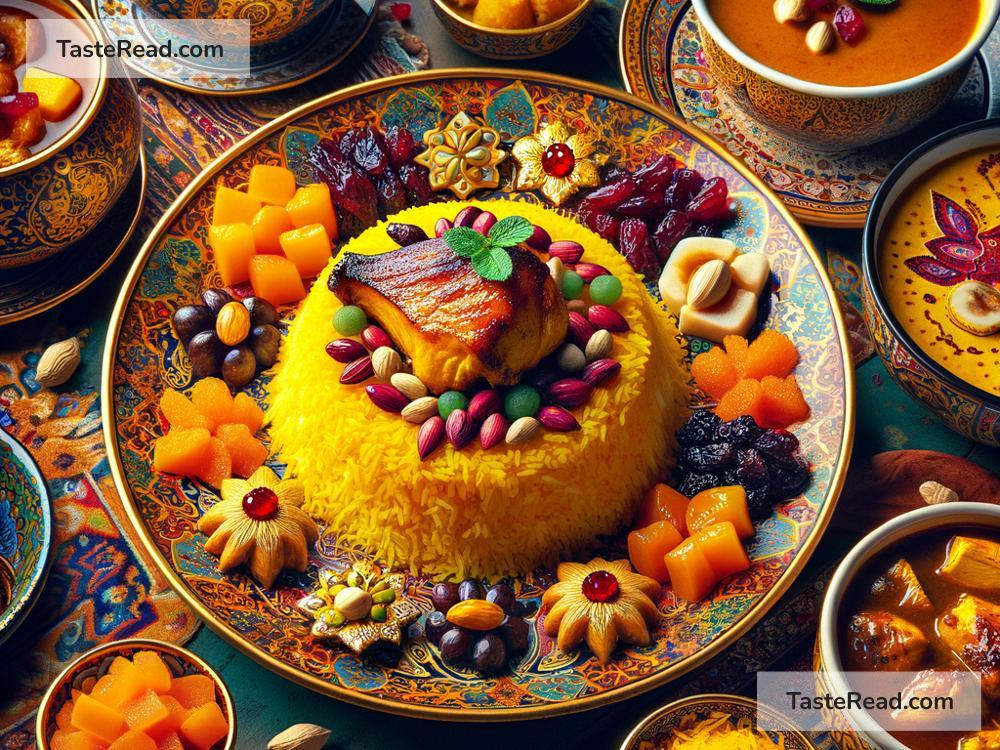Persian Saffron: The Culinary Gold That Shaped a Legacy
When it comes to ingredients that hold a special place in culinary traditions, saffron stands out as one of the most prized and fascinating spices. In Persian cuisine, saffron is more than just a spice—it’s a symbol of luxury, tradition, and rich cultural heritage. Famous for its deep red threads, this “golden spice” has shaped Persian dishes for centuries, adding vibrant color, aroma, and flavor to meals.
Let’s take a journey into the legacy of Persian saffron-infused dishes and discover why this spice has such an important role in Persian culture and cooking.
What Is Saffron, and Why Is It So Special?
Saffron comes from the dried stigmas of the flower Crocus sativus, which is cultivated mainly in Iran, as well as in countries like Spain and India. However, Iranian saffron is highly regarded as the best in the world due to its superior quality, rich color, and strong flavor.
The process of harvesting saffron is intensive and delicate. Farmers have to pick the flowers by hand, early in the morning, and carefully extract the thin red threads. It takes around 150,000 to 200,000 blossoms to produce just one kilogram of saffron, which explains why it’s one of the most expensive spices globally. Despite its high price, Persian families value saffron not only for its culinary uses but also for its cultural significance.
Saffron in Persian Culture
In Persian society, saffron has been treasured for thousands of years. It has been used in food, medicine, and even rituals. Ancient Persians believed saffron had healing properties—it was used to treat depression and boost energy. Today, saffron remains a vital part of Persian identity, as it represents quality, tradition, and abundance.
Persian saffron is often gifted during special occasions like weddings and New Year celebrations (Nowruz). It symbolizes joy, wealth, and good fortune. This connection between saffron and auspiciousness reflects its importance not just in cooking, but in Persian life as a whole.
Persian Dishes Brought to Life With Saffron
Persian cuisine is famous for its balance of flavors, colors, and textures, and saffron plays a starring role in many iconic dishes. Let’s explore some of the most well-loved saffron-infused recipes.
1. Tahdig (Crispy Rice)
Tahdig is perhaps one of the most beloved dishes in Persian cooking. It refers to the golden, crispy layer of rice at the bottom of the pot, often flavored with saffron. After cooking, the rice is carefully flipped onto a plate, revealing the bright yellow layer infused with saffron. The fragrant aroma hits the senses first, followed by the irresistible crunch of perfectly cooked tahdig.
Tahdig is more than just food—it’s a centerpiece of family meals and Persian hospitality. Families take pride in making the perfect tahdig, and it’s always a highly anticipated part of the meal.
2. Zereshk Polo (Barberry Rice With Saffron)
Zereshk polo is a stunning dish that combines tangy barberries with golden saffron rice. The barberries are lightly sautéed with sugar, creating a sweet-and-sour flavor that pairs beautifully with the saffron-infused rice. Often served with tender roasted chicken, zereshk polo is popular during celebrations, weddings, or dinner parties.
The combination of saffron and barberries creates a visual feast, with colors ranging from bright yellow to deep red. This dish truly showcases Persia’s love for intricate flavors and elegant presentation.
3. Shirin Polo (Sweet Rice Pilaf)
Sweet and aromatic, shirin polo is another saffron-infused masterpiece. This dish features basmati rice cooked with saffron, orange peel, carrots, and nuts like pistachios and almonds. The mix of flavors is delightfully complex, combining sweetness from the oranges and earthiness from the saffron.
Shirin polo is often served at special gatherings and celebrations, symbolizing joy and prosperity. It’s a testament to the Persian art of elevating simple ingredients into something extraordinary.
4. Fesenjan (Walnut and Pomegranate Stew)
While saffron isn’t the main ingredient in fesenjan, many cooks add a pinch of saffron to give this hearty stew an additional layer of flavor. Made with ground walnuts, pomegranate molasses, and meat (usually chicken or duck), fesenjan is deeply flavorful and comforting. The saffron enhances the richness of the dish and adds a touch of its signature aroma.
5. Persian Ice Cream (Bastani Sonnati)
Saffron isn’t limited to savory dishes; it’s also used in desserts. Persian ice cream, or bastani sonnati, is an indulgent treat flavored with saffron, rose water, and pistachios. This creamy, vibrant dessert is a favorite on hot summer days, offering a taste that is both refreshing and rich.
The Artistic Touch of Saffron
What sets Persian saffron dishes apart isn’t just the flavor—it’s the artistry behind them. Persian food is a celebration of colors and patterns, and saffron plays a vital role in creating visual beauty. Whether it’s the golden hue of saffron rice or the sunny touch it adds to ice cream, saffron transforms ordinary dishes into works of art.
Conclusion: A Timeless Legacy
Persian saffron-infused dishes are more than recipes—they are a legacy passed down through generations. They reflect the deep respect Persians have for their culinary traditions and their love for vibrant, flavorful food. Saffron remains the heart of Persian cooking, bringing elegance and warmth to every dish.
The next time you taste saffron or cook with it, take a moment to appreciate the journey it has been on—from the fields of Iran to your kitchen. Whether it’s tahdig, zereshk polo, or bastani sonnati, Persian saffron dishes invite us to savor not just the flavors, but the stories and traditions behind this golden spice.


